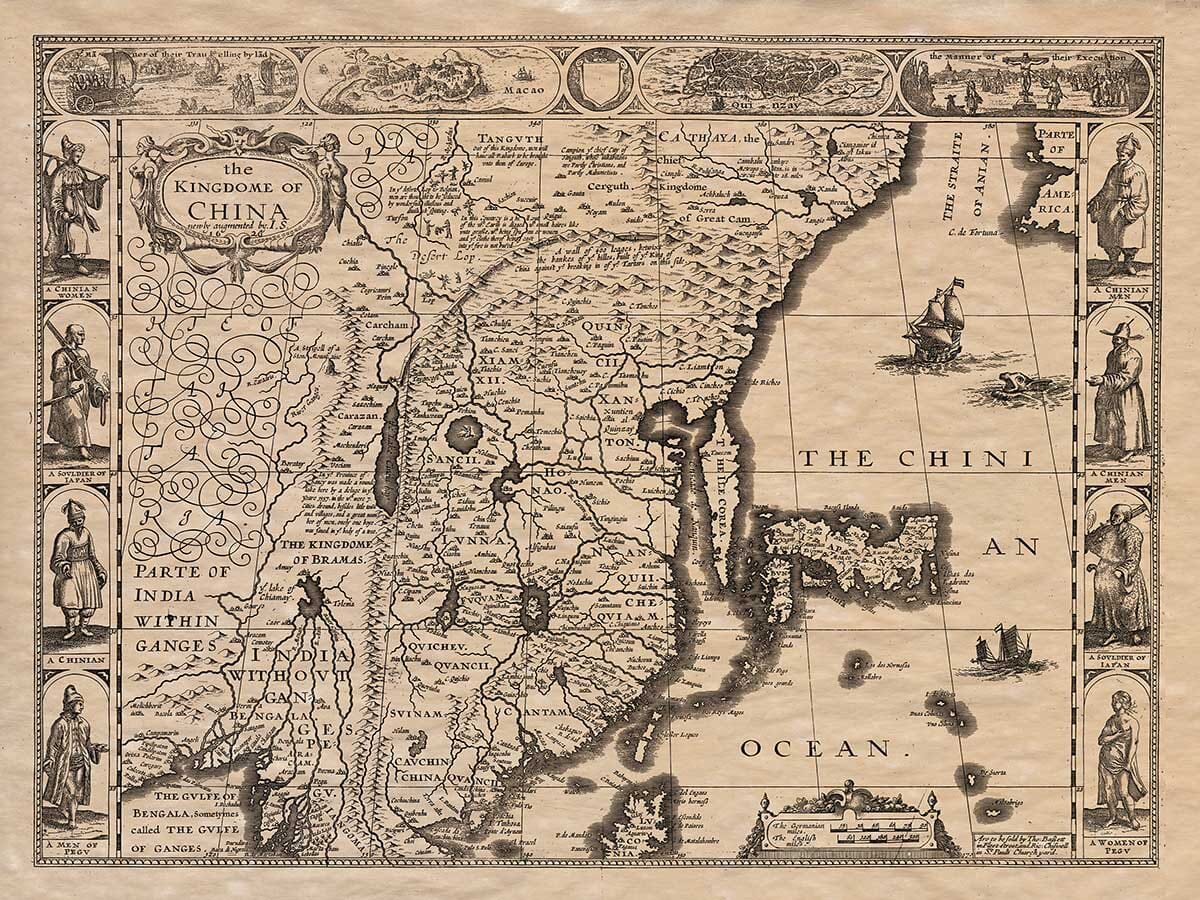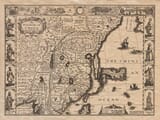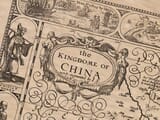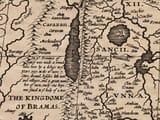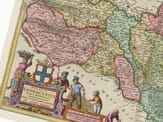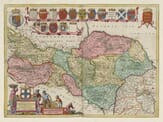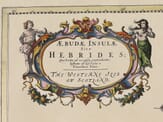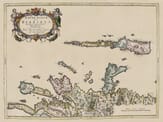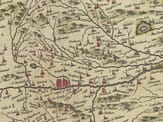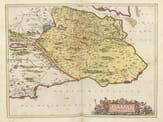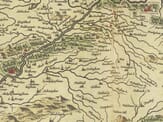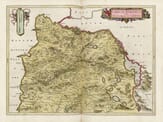Description
This is a Modern English Translation from the verso of the Old Map of China:
Geographical Introduction
The entire region of Asia, which is separated from Persia by the River Indus to the west, is widely known by the general name of the East Indies. This area is further divided by the famous River Ganges into two parts:
India intra Gangem (India within the Ganges), which faces Europe.
India extra Gangem (India beyond the Ganges), which stretches to the far east.
Some believe that this land was once known as Evilah, and others think it was the ancient region called Serica. Today, the inhabitants themselves use different names for these lands:
The western part is called Indostan.
The eastern region, which is our focus, has been known by names such as Tangis, Mangi, or Macy, and more recently Sinarum Regio, or China.
Location and Civilization
This Kingdom lies at the far eastern edge of the continent, making it the most distant land from Europe and Christendom. Despite being so remote, it has been a centre of the arts and civility, and even surpasses many other regions in wealth, craftsmanship, and learning.
Their numerous inventions and polite manners speak to their long-standing civilization. They keep meticulous records, claiming a history that includes over 1,600 years and more than 100 kings. Although some say their early records are exaggerated, they have preserved many books and writings through the centuries.
Scepticism About History
Some argue whether all of this is true, as their stories often go beyond belief. But even if exaggerated, it’s undeniable that China has existed as a people and culture for a very long time, possibly thousands of years, unlike many newer nations.
Kings and Dynasties
They say their first King was named Yraii, and many kings ruled after him. However, at one point, they were conquered by the Tartars, who ruled for a time. This period of change is said to have been foretold by an ancient prophecy. One notable Tartar king was Chublachan, who some compare to a miracle due to his rapid conquests and strange appearance.
Ancient Fame
The people of China were known even to ancient Europeans. The famous traveler Marco Polo wrote of them, and it’s believed that references to them go back even further in history. Despite some isolation, their greatness was long recognized.
Geography and Size
China is now a vast empire. It stretches in latitude from about 23° (the Tropic of Cancer) to 53° north (near the Arctic), and in longitude from 130° to 160°. Its western border is Indostan (India within the Ganges), to the east is the Mare Cin (Eastern Sea), to the north is the Empire of the Great Cham (likely referring to the Mongols or Tartars), separated from China by high mountains and a great wall over a thousand miles long, built by Tzanitzon, their 117th king. To the south is the Kingdom of Chan Chin China, part of southern India.
Natural Wealth and Industry
The climate is temperate, and the land very fertile. The mountains and fields are rich with cattle and wild animals like boars, foxes, hares, and rabbits. These provide food and skins for clothing. The cultivated land produces plenty of corn, wheat, barley, and rice in great abundance. Their gardens are filled with beautiful flowers, and nearly every patch of land is productive—either growing food or containing mines rich in gold and silver.
Their main river, called Polysango, is full of fish and waterfowl, enough to feed entire cities. For example, the city of Canton is said to consume 10,000–12,000 wild ducks daily. This river also supports their trade network, transporting goods across the empire.
Their main exports include: Silks and sugars, Wool, cotton, olives, metals, Rhubarb, honey, fine ceramics (porcelain), camphor, ginger, pepper, and musk, Salt (especially from Canton, where the salt trade alone is worth 18,000 crowns annually)
This prosperity is not only due to natural wealth but also to the incredible work ethic of the people, who view idleness as disgraceful. As a result, they are not only extremely populous but also very wealthy.
Appearance and Clothing
The Chinese are typically described as having:
Broad faces, Dusky skin. Crooked noses. Small black eyes, Thin beards, Long hair on their heads
If someone is particularly handsome, people are likely to joke or tease him—just as one might mock an unusually handsome person in a humble village.
The wealthy wear silk garments, while the common people wear linen. They have not yet adopted wool clothing widely. Women wear gold and jewels in their hair and seldom go outside without a large retinue of attendants.
Intelligence and Innovation
Chinese men are incredibly hardworking and intelligent in their various trades. It’s rare to see them idle. They also do not easily allow foreigners into their inner circles unless they are proven honest and loyal.
They are very devoted to manual arts and trades, excelling in practical skills more than any other nation. Much debate has occurred about who invented gunpowder and printing—two of the greatest human innovations—but these were definitely in use in China long before Europe had even heard of them.
They write not from left to right (like Europeans), nor right to left (like Hebrews), but from top to bottom of the page. They use the same written characters across the entire empire, even though spoken languages may differ by region.
Language and Writing
Although the written characters are the same throughout the entire kingdom, the spoken language differs considerably from one province to another. This means that people from distant regions may not understand each other when speaking, but they can still read and understand the same writing. This shared writing system unites the empire despite linguistic diversity.
The Chinese have great respect for learning and education, and their scholars and writers are held in high regard. Their books are numerous, covering a wide variety of topics—from philosophy and history to medicine and astronomy.
Their literature and written records are very carefully preserved, and printing is widely used, making books more common than in many other parts of the world. The Chinese are also known to be very cautious in allowing foreign influence into their society and protect their culture and traditions diligently.


